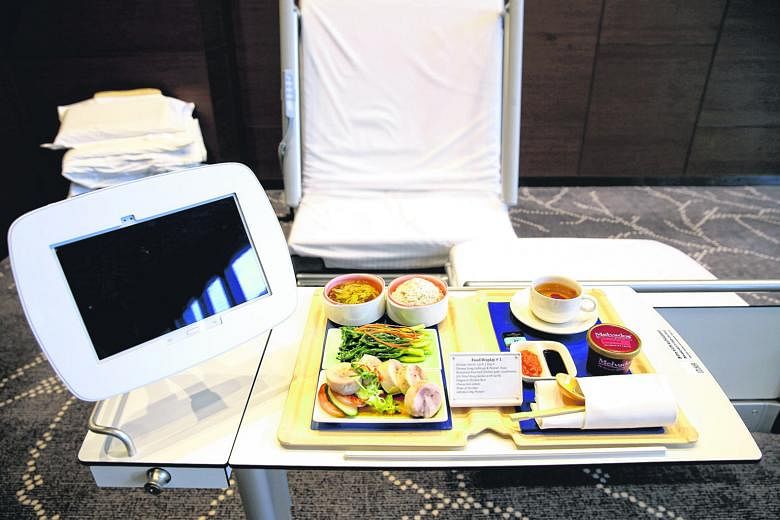Singapore may still be among the region's top dogs when it comes to medical tourism, but its neighbours are swiftly closing the gap.
Lower costs and the growing availability of quality care in neighbouring countries will not only lure medical tourists away from Singapore, but could also encourage patients to stay home for treatment, said experts.
According to data from a medical tourism index released last month, Singapore was ranked the most attractive among seven Asian countries in terms of "patient experience", but was also one of the least attractive where costs were concerned.
In comparison, the attractiveness of the patient experience in countries such as Malaysia and Indonesia grew between 2015 and this year, while healthcare costs in these places remained relatively low.
The index was developed by investment and research firm AB Bernstein and medical facilitation company Global Health and Travel.
Their findings were announced at the Asia Pacific Healthcare and Medical Tourism Summit in Bali last month, attended by hospital administrators from the region.
Providing a luxury experience to woo wealthy patients
The findings suggest that, despite its reputation for cutting-edge technology and top medical expertise, Singapore could be pricing itself out of the market.
-
Seeking preventive care, good service
-
How has the average medical tourist to Singapore changed over the years? For one thing, he no longer seeks treatment only when he falls ill.
"The trend we see now is an increase in medical tourists seeking preventive treatments or reversal of lifestyle-related ailments," said Dr Melvin Look, director of the PanAsia Surgery Group, a group of doctors specialising in a range of operations. "For instance, they may come for their routine colonoscopy... and combine it with a few days of shopping and sightseeing."
They also want good service. This means the little things - whether it is a room that feels more like it is in a hotel than a hospital, or a doctor who speaks their own language.
"It's the value-added treatment they are seeking," said Mr Tan Ki Mien, managing director of HealthQuay Medical, a clinic that focuses on wellness and helping patients lead healthier lifestyles. "Instead of just being treated... with medication, people prefer medical services where they are cared for and respected as a whole."
They are also far more informed on treatment options and costs. Said Dr Look, a consultant general surgeon: "They even read reviews by our other patients in medical forums, very much like how they would seek a restaurant based on the Michelin Guide or a hotel based on TripAdvisor."
Linette Lai
For example, a relatively low-cost total hip replacement operation at a private hospital here would set a patient back by around $14,000. The same procedure at Mahkota Medical Centre in Malaysia - which treats more than 80,000 foreign patients a year - costs only $8,800.
Already, some private hospitals are going the extra mile by providing a luxury experience.
At Farrer Park Hospital, patients can shop on wireless tablets and can have purchases delivered to the bedside within 30 minutes. The hospital also shares its kitchen with the adjoining One Farrer Hotel and Spa, said the hospital's chief executive, Dr Timothy Low.
"It is one kitchen and our patients get five-star hotel food," he added.
Others are diversifying by investing in overseas projects. Thomson Medical is building an 11ha healthcare hub across the Causeway, and the group already has a presence in Malaysia and Indonesia. Said a spokesman: "To ensure our patients get the right care, we may transfer them from facility to facility."
Singapore Tourism Board (STB) data shows medical tourism receipts fell to $832 million in 2013, down from $1.1 billion the year before. They rose to $994 million the following year.
But since 2015, STB has stopped providing the figure.
"Over the years, STB has worked closely with private healthcare providers to expand their reach in key target markets," said Mr Soo Siew Keong, STB director of trade engagement and market access .
These providers are now in a position to take the lead in driving the industry's growth, he added.
In comparison, umbrella organisations drive the national medical tourism agenda in countries like Malaysia - posing a coordinated threat to the piecemeal efforts of individual hospitals here.
Offerings there include fast- tracked immigration processes and dedicated concierge services at two international airports.
And in Indonesia, the Siloam Hospital group plans to open more than 10 hospitals in a single year, partly to cater to domestic demand.
As hospital groups in Malaysia, Thailand and Indonesia - where Singapore's medical tourists have traditionally come from - raise their game, local operators have started to look at markets like Bangladesh, Myanmar, India and China instead.
Lower costs aside, many overseas healthcare chains - such as the Bangkok Dusit Medical Group, Thailand's largest private hospital operator - are beginning to focus on wellness and rehabilitation.
But local providers have yet to fully explore this space, said Dr Vincent Chia, founder of consultancy firm Asian Healthcare Solutions and the former chief executive of Gleneagles Hospital Singapore.
"I think that we have to look beyond just providing acute services, but it will be extremely challenging because our costs are high."
The good news is, Singapore is still the top choice in the region for patients who need world-class care for complex conditions, Dr Chia said.
New drugs for life-threatening conditions such as cancer are also approved for use here relatively quickly - a draw for well-heeled people living in countries like China where they are not yet available.
"Now they are travelling to places like the United States to get such drugs," Dr Low said. "Why not get them to come to Singapore?"


